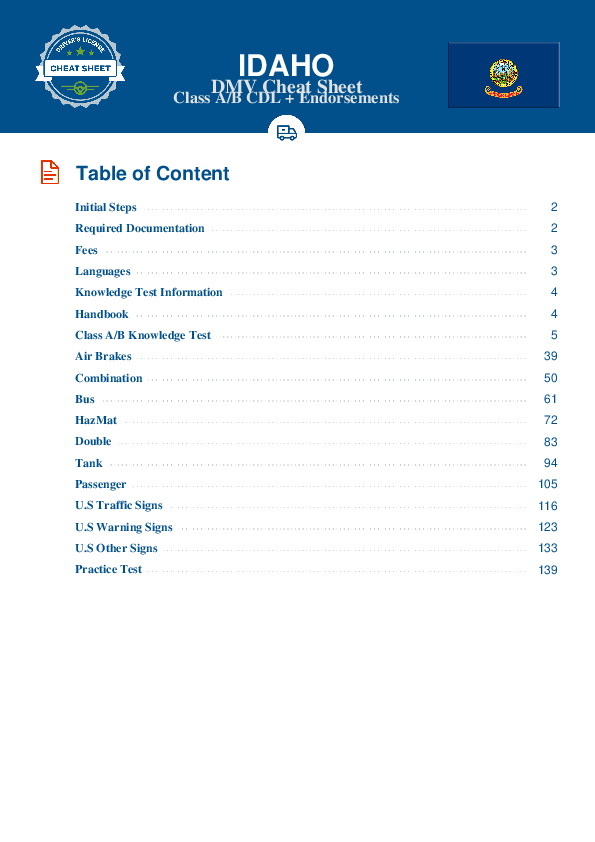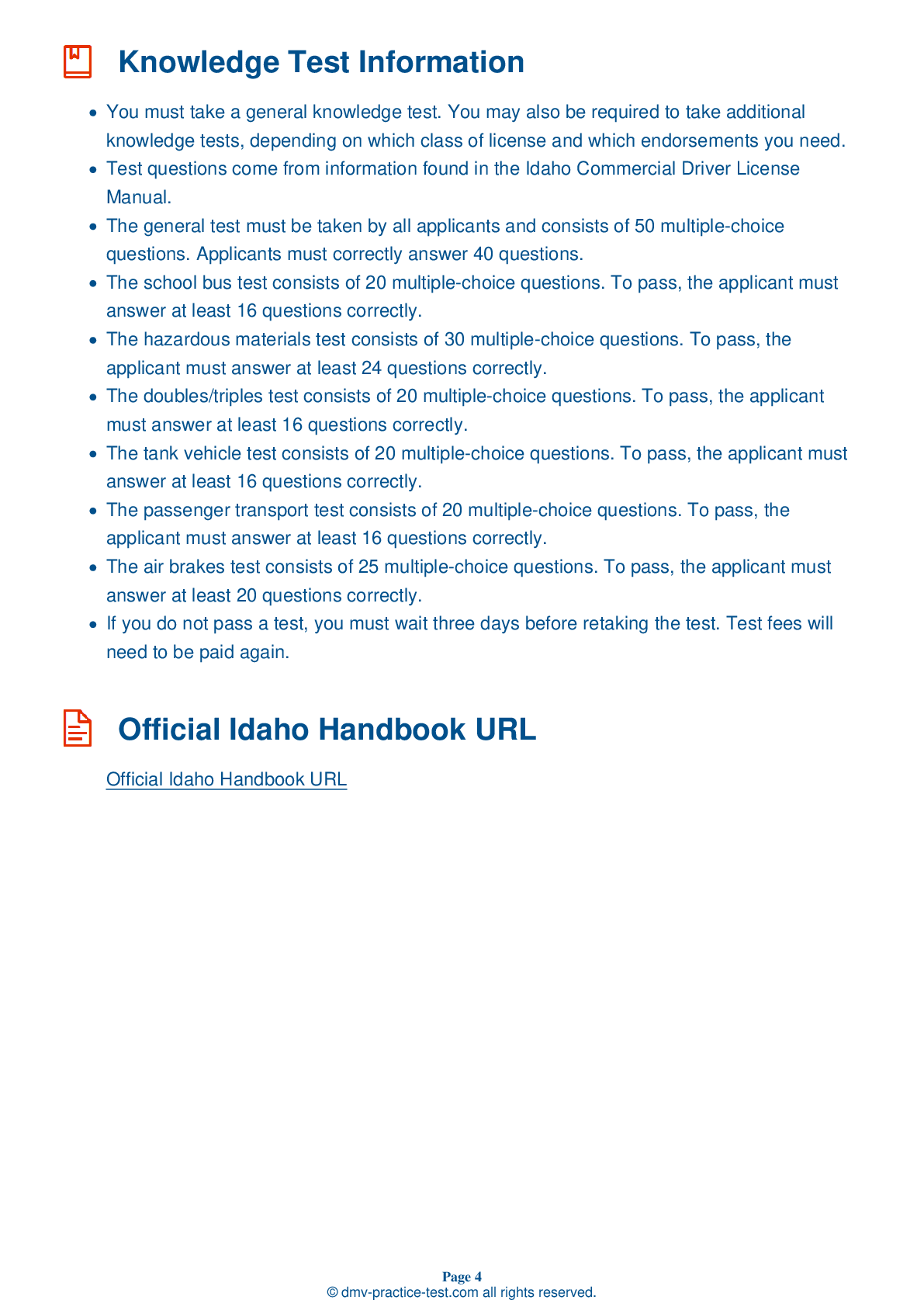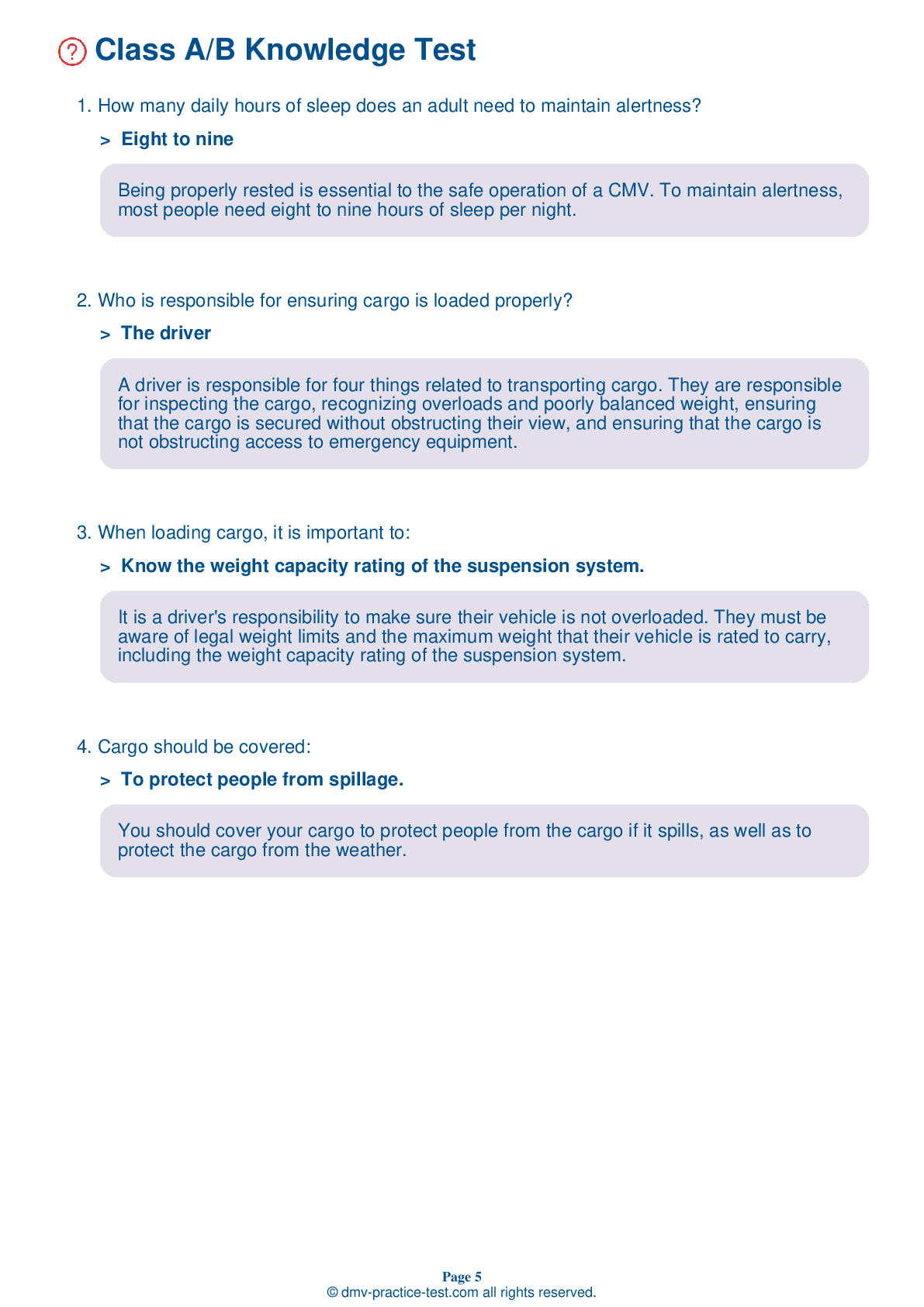Combination Vehicles Practice Test | Idaho 2025 #2 Page 3 of 3
Train for FREE online with our Idaho CDL combination vehicle test. The official exam test consists of several obligatory parts, with all of them checking your knowledge of different blocks of road rules. If you need to obtain a ID combination license in 2025, practice as much as possible. Free sample tests published on our website will help you check and improve your knowledge and boost your grades. Please bear in mind that DMV requirements for issuing a combination license may vary from state to state.
15 . The service air line is often controlled by the foot brake and is attached to the ____ valves.
The service air line carries air and is controlled by either the foot brake or trailer hand brake. The service air line is attached to relay valves, which allow the trailer brakes to be applied quickly.
16 . The trailer hand valve should be used:
The trailer hand valve (also referred to as the "trolley valve" or "Johnson bar") works the trailer brakes and should be used only when testing them. Using the trailer hand valve while driving could result in a skid.
17 . Rearward amplification refers to:
Vehicles with trailers are vulnerable to rollover due to the "crack-the-whip" effect, which is caused by rearward amplification.
18 . Pushing in the trailer air supply control will:
Push in the trailer air supply control to supply the trailer with air. Pull out the trailer air supply control to turn off the air supply and activate the emergency brakes.
19 . If a trailer begins to skid, it is best for the driver to:
If your trailer begins to skid, you should release the brakes to regain traction. The trailer will begin to straighten out once the wheels begin to grip the road again.
20 . Rearward amplification refers to:
The "crack-the-whip" effect is a result of rearward amplification. If not properly handled, a trailer can tip over due to rearward amplification.
See the exact questions that will be on the 2025 Idaho DMV exam.
99.2% of people who use the cheat sheet pass the FIRST TIME
Lillian MCcranie explains how our CDL study guide was helpful in passing the exam and recommends it to everyone.
Cameron tells us how he purchased the CDL exam, and found it to be a useful tool which helped him pass the exam and find a job.



